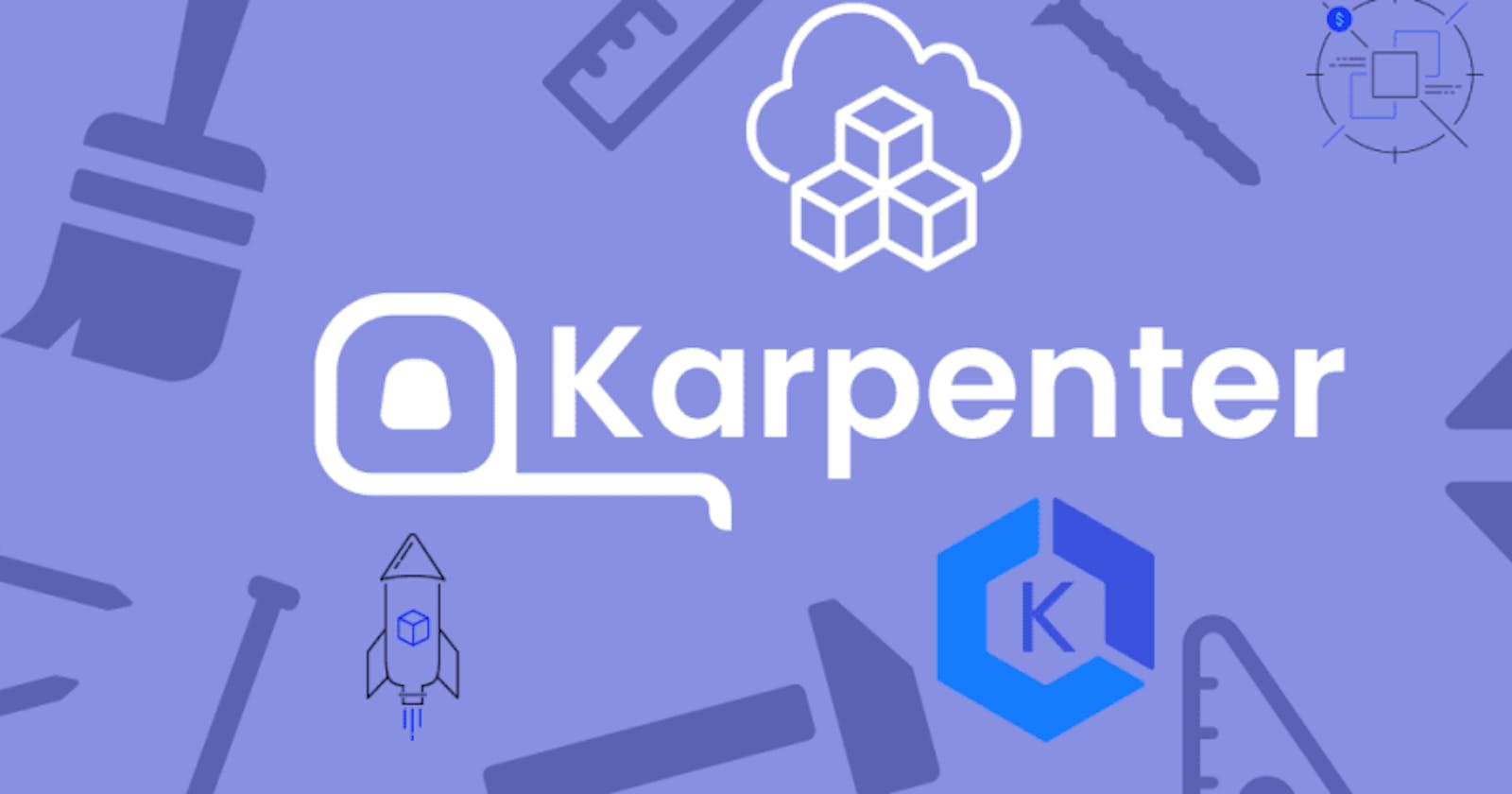Abstract
For using spot instances in karpenter provisioner, we need to know that Karpenter does not handle the Spot Interruption Termination Notice (ITN) two-minute warning. In lieu of this, AWS Node Termination Handler (NTH) is the solution to gracefully cordon and drain the spot nodes when they are interrupted.
Pods that require checkpointing or other forms of graceful draining, requiring the 2-mins before the shutdown, will need NTH.
This post provides step-by-step to install NTH with SQS processor mode, provide AWS IAM permission for the handler through IAM role for service account and test it.
Note that this post mentions karpenter but does not describe any about karpenter. However, the setting of NTH in this post suits tools like Karpenter without using AutoScaling group (ASG)
Table Of Contents
🚀 Pre-requisite
EKS cluster
IAM Instance profile which will be assigned to EKS nodes and help them to join the EKS cluster
OIDC provider
Karpenter provisioner with capacity-type
spot
🚀 Create NTH serviceAccount
The best practice to provide AWS permission for Kubernetes service is Using IAM Service Account Instead Of Instance Profile For EKS Pods
If you already set up OIDC by using IAM identity provider then you can create the IAM role as service account for karpenter manually or using CDK.
The role only needs permission to consume SQS messages, EC2 describe actions and autoscaling describe actions
nth-sa.tsThen generate service-account yaml base on the output IAM role ARN
Create service account by
kubectl apply -f nth-sa.yamland then check the result⚡ $ kubectl get sa -n kube-system NAME SECRETS AGE aws-node-termination-handler 1 13m
🚀 Create SQS queue and event EventBridge rules
The EventBridge rules send all events from spot instances such as
"EC2 Spot Instance Interruption Warning", "EC2 Instance Rebalance Recommendation", "EC2 Instance State-change Notification"orAWS Health Eventto the SQS target queueNTH handler listens to the SQS, processes messages and then drains and/or cordons the corresponding node
We can use CDK to create those AWS resources
nth-sqs-rules.tsSee its diagram which is generated by cdk-dia

🚀 Install the AWS Node Termination Handler non-ASG
Custom helm chart value
Disable creating new
serviceAccountand specify theserviceAccountwe created aboveProvide
queueURLandawsRegion
nth-values.yaml
enableSqsTerminationDraining: true
queueURL: "https://sqs.ap-northeast-2.amazonaws.com/123456789012/nth-dev-sqs"
awsRegion: "ap-northeast-2"
serviceAccount:
create: false
name: aws-node-termination-handler
checkASGTagBeforeDraining: false # <-- set to false as instances do not belong to any ASG
assumeAsgTagPropagation: true # <-- mitigate the need of ASG IAM permission
enableSpotInterruptionDraining: true
Install
aws-node-termination-handlerusing helm chart⚡ $ helm upgrade --install aws-node-termination-handler eks/aws-node-termination-handler -n kube-system --values yaml/nth-values.yaml Release "aws-node-termination-handler" does not exist. Installing it now. NAME: aws-node-termination-handler LAST DEPLOYED: Sun Apr 10 15:39:43 2022 NAMESPACE: kube-system STATUS: deployed REVISION: 1 TEST SUITE: None NOTES: *********************************************************************** * AWS Node Termination Handler * *********************************************************************** Chart version: 0.18.0 App version: 1.16.0 Image tag: public.ecr.aws/aws-ec2/aws-node-termination-handler:v1.16.0 Mode : Queue Processor *********************************************************************** ⚡ $ kubectl get pod -n kube-system -l app.kubernetes.io/name=aws-node-termination-handler NAME READY STATUS RESTARTS AGE aws-node-termination-handler-65b75b4896-74zqg 1/1 Running 0 95sCheck the log to see if NTH can listen to the SQS queue
kubectl logs -f --tail=100 -n kube-system aws-node-termination-handler-5889bcd797-h2sth 2022/04/10 15:53:07 INF Starting to serve handler /healthz, port 8080 2022/04/10 15:53:07 INF Started watching for interruption events 2022/04/10 15:53:07 INF Kubernetes AWS Node Termination Handler has started successfully! 2022/04/10 15:53:07 INF Started watching for event cancellations 2022/04/10 15:53:07 INF Started monitoring for events event_type=SQS_TERMINATENote that NTH is deployed on any nodes without taints even on the spot instance, so for best practice, the NTH deployment should be assigned to the stateful node.
🚀 Check NTH works well
How to know if NTH works well? We can use EC2 Spot Interruptions - AWS Fault Injection Simulator to send
aws:ec2:send-spot-instance-interruptionsevent and go to check if NTH is able to cordon the nodes and karpenter provides a new node
NTH logs
2022/04/11 16:23:33 INF Adding new event to the event store event={"AutoScalingGroupName":"","Description":"Rebalance recommendation event received. Instance i-09165e73a609fbbca will be cordoned at 2022-04-11 16:23:33 +0000 UTC \n","EndTime":"0001-01-01T00:00:00Z","EventID":"rebalance-recommendation-event-33643432376337652d326234632d633063372d313138642d626231323834393963343761","InProgress":false,"InstanceID":"i-09165e73a609fbbca","IsManaged":true,"Kind":"SQS_TERMINATE","NodeLabels":null,"NodeName":"ip-172-10-51-198.ap-northeast-2.compute.internal","NodeProcessed":false,"Pods":null,"StartTime":"2022-04-11T16:23:33Z","State":""} 2022/04/11 16:23:34 INF Requesting instance drain event-id=rebalance-recommendation-event-33643432376337652d326234632d633063372d313138642d626231323834393963343761 instance-id=i-09165e73a609fbbca kind=SQS_TERMINATE node-name=ip-172-10-51-198.ap-northeast-2.compute.internal 2022/04/11 16:23:34 INF Draining the node 2022/04/11 16:23:38 INF Node successfully cordoned and drained node_name=ip-172-10-51-198.ap-northeast-2.compute.internal reason="Spot Interruption event received. Instance i-09165e73a609fbbca will be interrupted at 2022-04-11 16:23:33 +0000 UTC \n" 2022/04/11 16:23:38 INF Node successfully cordoned and drained node_name=ip-172-10-51-198.ap-northeast-2.compute.internal reason="Rebalance recommendation event received. Instance i-09165e73a609fbbca will be cordoned at 2022-04-11 16:23:33 +0000 UTC \n"# kf get node -l karpenter.sh/capacity-type=spot NAME STATUS ROLES AGE VERSION ip-172-10-21-134.ap-northeast-2.compute.internal Ready <none> 58s v1.20.15 ip-172-10-51-198.ap-northeast-2.compute.internal Ready,SchedulingDisabled <none> 10h v1.20.15 ip-172-10-51-44.ap-northeast-2.compute.internal Ready <none> 10h v1.20.15 ip-172-10-51-7.ap-northeast-2.compute.internal Ready <none> 10h v1.20.15
🚀 Conclusion
Now we have
node-termination-handlerwhich takes care of spot interruption to ensure our services are gracefully rolling.But for services with a long process such as data pipelines which are expensive to restart, we should consider using on-demand instances
References:

